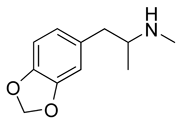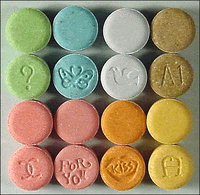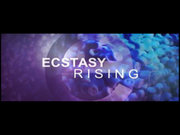In the Navy, a lack of situational awareness can be deadly. Some over-the-counter medicines (cough medicines, painkillers) can decrease the edge military personnel need to tread the line between life and death. A drowsy hull technician working on a metal press could have a finger or two crushed. A boatswain's mate on a ship's forecastle might not be paying attention to the color of the anchor chain paying out of the locker, or turn the friction brake in the wrong direction, with disastrous results.
You get the idea. If an over-the-counter medication could perhaps lead to these kinds of situations, imagine what a mind-altering drug like ecstasy could lead to. It has no accepted medicinal use for treatment in the United States. And it's illegal.
Ecstasy is a synthetic amphetamine drug, related chemically to methamphetamine compounds. It's also known by the street names "E' "X' and "XTC." It is often referred to as a "club drug" because it has been sold in nightclubs and rave parties. It's misperceived as a "safe drug" without the side effects of other rave drugs such as LSD, methamphetamines, heroin or PCP.
Ecstasy comes in pill form, about the size of an aspirin, or may occur as a capsule or sold as a powder.
Immediate effects include a sense of euphoria, energy and altered sensory perception.
Then there are the side effects.
Current medical literature lists depression and panic disorders as some of the long-term effects. Acute short-term effects include water loss from sweating, high body temperature and loss of motor skills and judgment.
But drinking large amounts of water isn't a solution to the water loss problem caused by ecstasy abuse. A large intake of water to replace water loss from sweating and a higher body temperature can lead to a salt imbalance, and a trip to the emergency room.
This is a huge risk to one's health and safety for a drug "high." Why risk your health and safety, as well as the safety of others around you, to a drug that the Food and Drug Administration said has no medical treatment value, especially one that was produced in someone's basement?
No one in the Navy would trust their lives to somebody who wasn't at 100 percent efficiency because of some party drug. Everyone's job is too important to be compromised by drug abuse. When it comes to safety, staying away from ecstasy is a no-brainer.
DOD has been testing for "designer amphetamines since 1997, and every sample that passes through the military testing laboratories gets screened for these types of drugs. More than 400 Navy and Marine Corps personnel were identified for ecstasy abuse in FY00.
The Navy and Marine Corps team has a "zero tolerance policy for illegal drug use, and that includes ecstasy. Don't let it turn into your agony. If you're doing it, stop. If someone else is doing it, report the individual. Don't risk detection, punishment, or discharge under dishonorable or other than honorable conditions.
But don't just avoid it for 3 those reasons, think of yourself and your shipmates. Its a matter of safety ... their lives could be in your hands.
COPYRIGHT 2001 U.S. Navy
COPYRIGHT 2004 Gale Group




